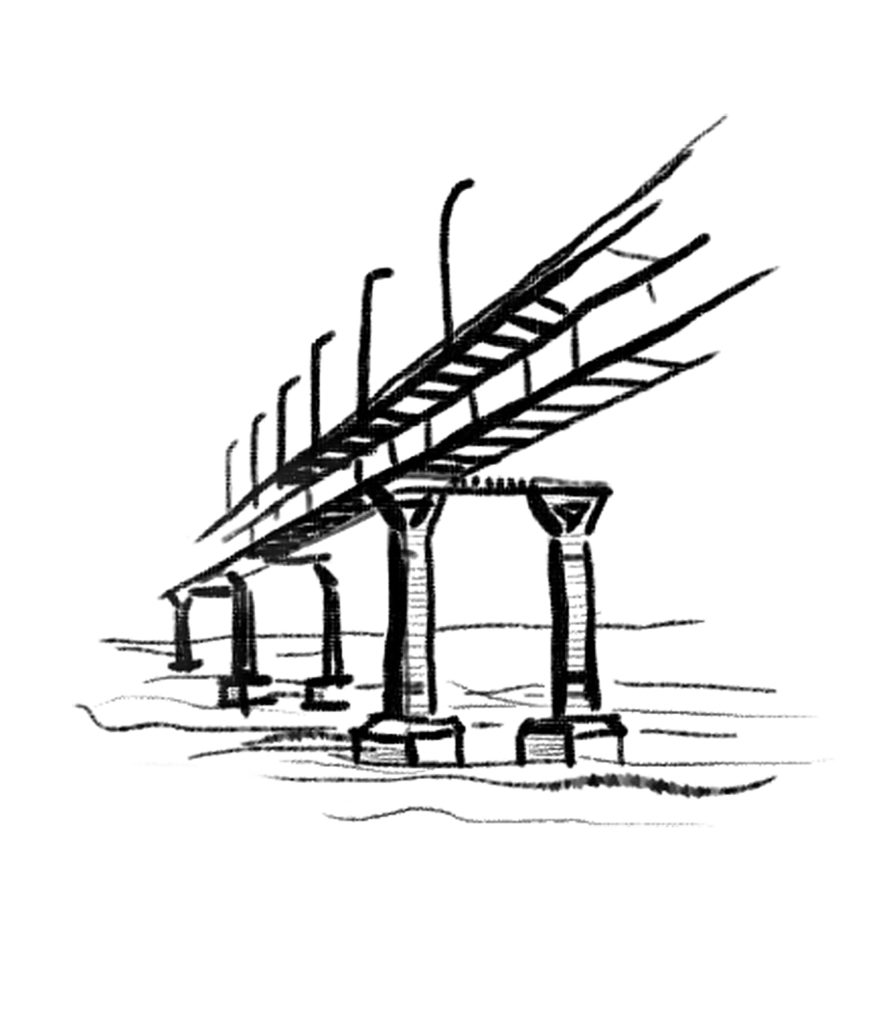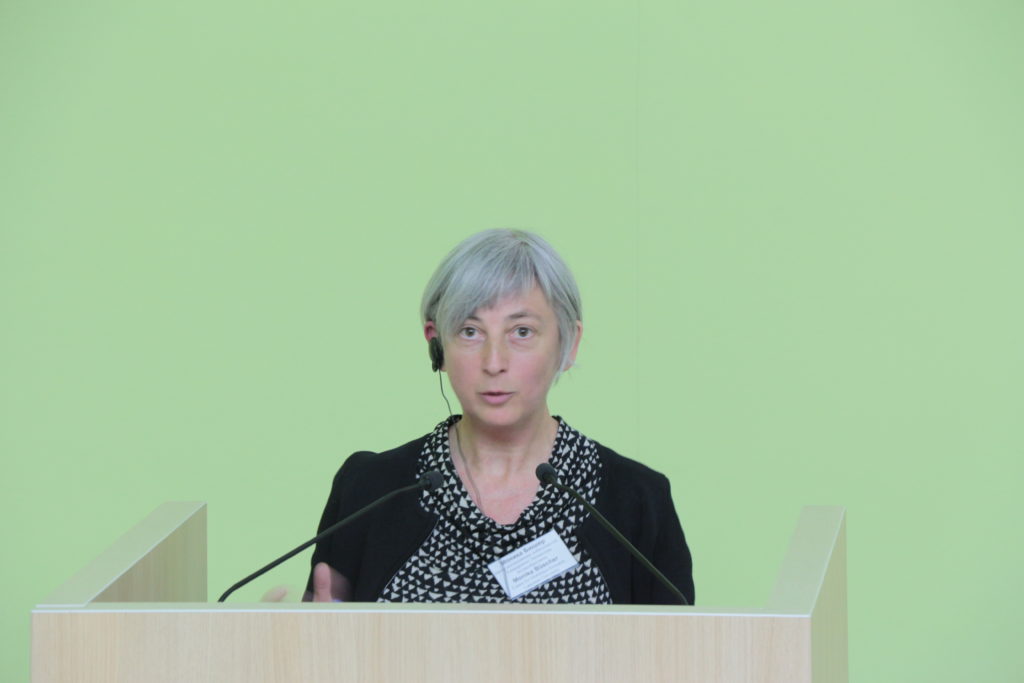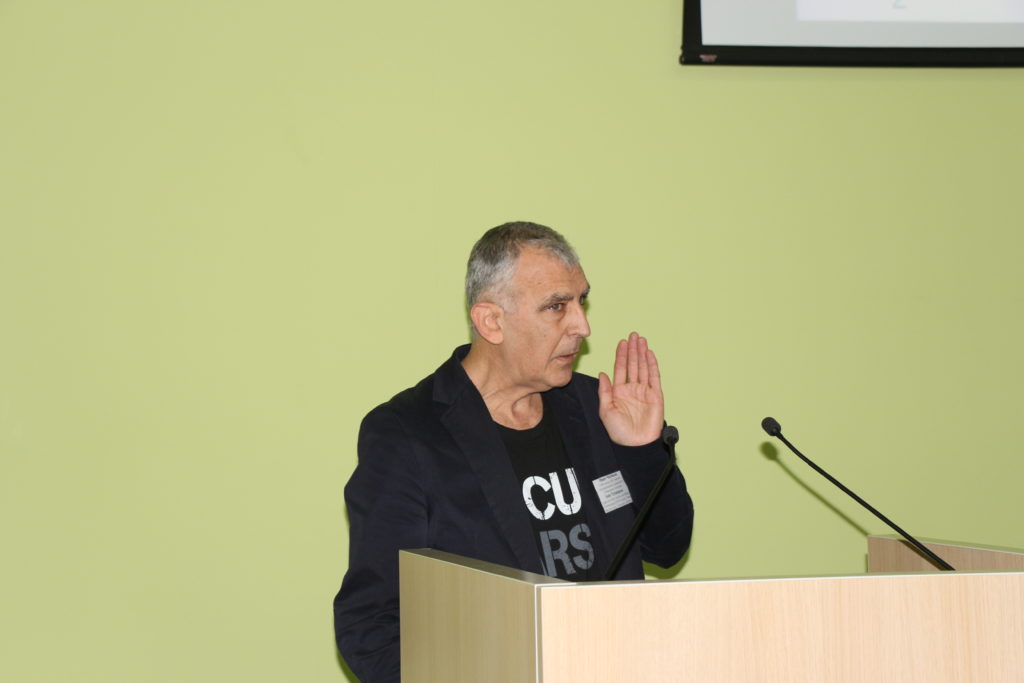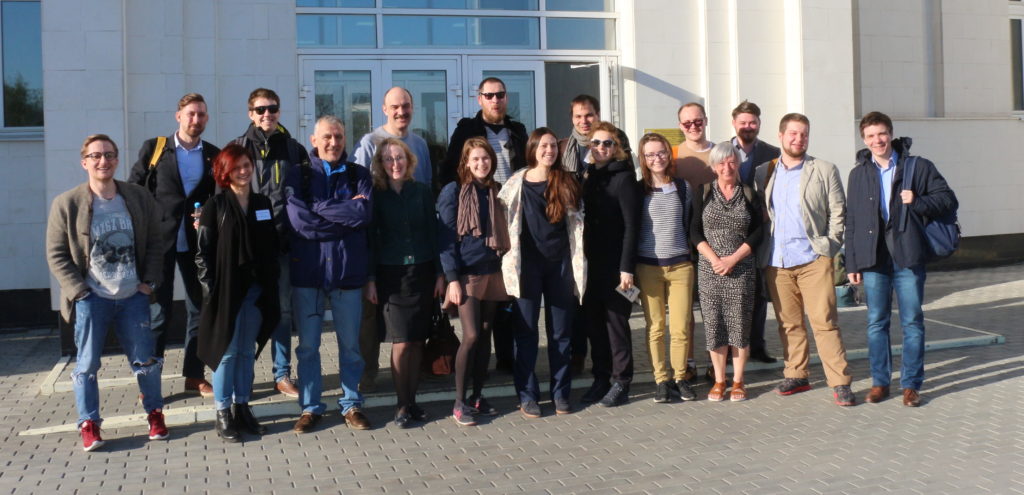Living infrastructures in cities and beyond
The notion of infrastructure became popular in STS literature in the 2000s and in the 2010s (fig. 1). Its popularity might be explained by its relevance to many urban and non-urban systems and networks, at the same it usually demands focusing on particular empirical case-study.

Infrastructure addresses big urban and technological projects like power networks (T. Hughes), as well as situational interactions between people and things (S. Star, G. Bowker). Infrastructure simultaneously covers the fields of urban studies showing the importance of the processes of privatization, neoliberalization and hybridization of city spaces (S. Graham, M. Gandy, S. Collier), informational technology studies addressing issues of scale, connectedness, categorization, and accessibility of information (G. Bowker, S. Star), mobility studies that tackle with the questions of flows, frictions, connectivity, and also the everyday experience of spaces and places, and many others (J. Urry, P. Adey). This kind of multiplicity of the notion of infrastructure makes it fresh and heuristically useful (?) for thinking the contemporary city and beyond.
Dancing with the Western infrastructural ideal
With all these thoughts in mind, a group of scholars from Volgograd and Saint Petersburg (Russia) with the support of Volgograd State University and European University at Saint Petersburg organized the international conference “Living Infrastructures: Beyond Global North and Global South”, which took place in Volgograd on April 27-28, 2017. The topic itself was devised during a previous workshop in Volgograd when several scholars questioned the position of urban infrastructures in Russia with regard to the Western infrastructural ideal. Based on the ideas of scholars from the so-called “second wave” of infrastructural studies, who criticized the normativity and the Western-centrism of infrastructure concepts in the articles and books of the STS cannon, we sought to articulate the specificity of Russian cases, as well as to emphasize the diversity of infrastructures all over the world. The idea was not only to de-colonize infrastructural studies extending them to Russian cases, but to show the delicate relations between people and the everyday things they are engaged with. “Living infrastructures” became thus a metaphor to remind scholars that infrastructures are dynamic and surprising, simultaneously resilient and fragile. They are ecologically mutually dependent on other life forms. They are not invulnerable or “eternal beings”, as social scientists of Durkheimian denomination thought of societies. They confront risks to their continued existence and have sometimes their own life.
The logo of the conference – the “dancing bridge” in Volgograd – might be seen as the symbol of the living infrastructures idea (fig. 2).

Volgograd’s “dancing bridge” was under construction for 13 years and it connects the central part of the city, very busy and intense one, with the natural outskirts of Volgograd floodplain, establishing a fast connection between different parts of regions at the cost of harming the subtle ecology of the floodplain. Notably, after the construction, the bridge began to “dance”, that is, oscillate because of wind conditions that created a lot of authority concerns and people’s rumors (look at the bridge here: https://www.youtube.com/watch?v=WEQrt_w7gN4). It became an important tourist attraction of Volgograd, although some days after the dancing, with the help of Swiss and German engineers (sic!), the oscillation was stabilized. In this way, the common infrastructural urban object became important part of Volgograd hybrid ecology, its urban narratives and global technological connections.
Organizing and blogging!
Preparing the conference, the organizers decided to “build” a temporary digital infrastructure to liven up an interest in the forthcoming event. The idea was to create a special blog on the WordPress platform, where different topics around the infrastructures could be exposed (https://livinginfrastructures.wordpress.com/about/). The team posted little essays on bicycle mobility, kids smart technological infrastructure, innovation infrastructure, anthropology of infrastructures, the influence of mega-events on urban infrastructures, childbirth infrastructures in Russian central and peripheral regions, and also on the topic of how the urban infrastructure elicit affects and emotions from the citizens. All these essays were disseminated in social media and helped to attract the attention of different scholars and activists to the conference issues. The blog platform attracted hundreds of website visitors.
The infrastucturation of the world
The conference gathered scholars across Russia, India, Bulgaria, Germany, Sweden, and the UK. It was the first STS-oriented conference focused on the topic of infrastructure in Russia ever. The conference was opened with a keynote on “Infrastructuring Mobile Utopia: Global Challenges, Global Responses” by Prof. Monika Büscher (Centre for Mobilities Research, Lancaster University) (fig 3). She analyzed cases of material infrastructural breakdown and digital humanitarianism when people converged online to restructure absent governmental. The presentation raised a range of important issues of mobile utopia and dystopia in equipped smart cities, digital and immaterial infrastructure, reflexive resilience in the context of sharing data and the precarity, and creativity in the process of infrastructurization. Three modes were suggested to develop the argument of reflexive resilience – archaeology, ontology, and architecture, in order to contribute to the discussion on relational infrastructure and posthuman relational ethics.

Ivan Tchalakov (PAST-Center, Tomsk State University / University of Plovdiv) opened the second day with his talk “Ships, Channels, Gravity Wells and Valleys: Towards Deep Space Infrastructures” (fig. 4). The examples of SpaceX and ULA were redefined through Latour’s restored symmetry as transportation for human and nature and as a conquest of the resources to become an infrastructure for the space-scape and interplanetary network. Tchalakov also discussed new private projects that might advance space industry further.

Both keynote lectures revolved around the questions of new and only anticipated infrastructures that should be delicately and intensely investigated by the STS scholars, using conceptual resources from philosophy, activism and social studies of science and technology.
The main topic of the conference was devoted to mobility infrastructures. The session “Mobilities Infrastructures: Speeding Up the Slow, Slowing Down the Fast” gathered scholars interested in changing practices of urban dwellers, the Russian subdued forms of mobility called “marshrutki”, the social infrastructures of public transport, the ambiguity of bicycle infrastructure, bike sharing systems in Russian big cities, and children “smart” mobilities. The multiplicity of the topics challenged participants to ponder upon the possibility to assemble the cases under the head of the mobility infrastructure notion. At the same time, it became very apparent that mobility is an important part of any infrastructures since it makes informational or material units pass through. How to create the infrastructure in such a way to make easier and comfortable to transit units, and at the same time to make people who use this infrastructure to feel comfortable and not alienated – it is a very important question.
The session “Urban infrastructure” drew attention to the relations between city and infrastructure. Participants demonstrated their interest in the influence of politics and policy on urban infrastructures, the access to the latter and the regime of uses. Many Russian cities represent cases of infrastructures with the centralized logic of a planned economy. Despite contemporary neoliberalism scholars’ emphasis on privatized and splintering infrastructures, we may find a lot of examples of path-dependent urban infrastructure, which follows the old and very obsolete logic of planned economy. It opens up the space for thinking about the very principles of urban infrastructure development.
In the session devoted to digital infrastructures, speakers problematized the relations between online and offline: how the space-based digital games connect to the body, perception, and the social order of city; how visualization and simulations of existing and anticipated infrastructures make work with the city space, and help to construct more comfortable and participative infrastructure. The question of representativity also penetrated the issue of media infrastructure in the game development for gamers’ imagination and anticipation of the cultural product itself.
The “Infrastructured Bodies” session tackled with the biopolitical question of a seamless connection between sociomaterial infrastructures and bodies. The speakers demonstrated how infrastructure matters when certain policies and extensive spatiality affect professional work, patients’ access and abilities and how particular enactments of diseases involve people through mobile applications and handmade infrastructures, where technology becomes secondary to knowledge exchange and accumulation.
Finally, the “Infrastructure Theories” session grasped all the previous insights into the concepts of infrastructure with all their range. Forgotten sociological classic Ferdinand Tönnies was considered to be a pioneer in logics of translation (connection of wills) and assemblage (collectives), dealing with a paradox of things as objects in relations of possession and capital. Bruno Latour’s material semiotics with the focus on operations of shifting (shifting-in, -out, -up, down) was considered an important resource for thinking of infrastructures as a type of relation and not as a set of things.
Make them live!
Monika Buscher from the Lancaster University told about how in situations of risk or accidents people start to help each other and make their own living infrastructure that are sometimes more effective than already created and established state and municipal infrastructures. The notion of living infrastructure could be also told about the conference participation as a special infrastructure when people all around the world gathered to talk about the different cases of infrastructure and by this created temporal emotional and narrative infrastructure to make infrastructure be living longer in the minds of scholars. Geoffrey Bowker and Stephen C. Slota in the brand new “Handbook of Science and Technology Studies” named their chapter “How infrastructure matter?”. We believe that the conference “Living Infrastructures Beyond Global North and Global South” in Volgograd advanced further another vital question: “How to think and talk on infrastructures as a living matter?”.
